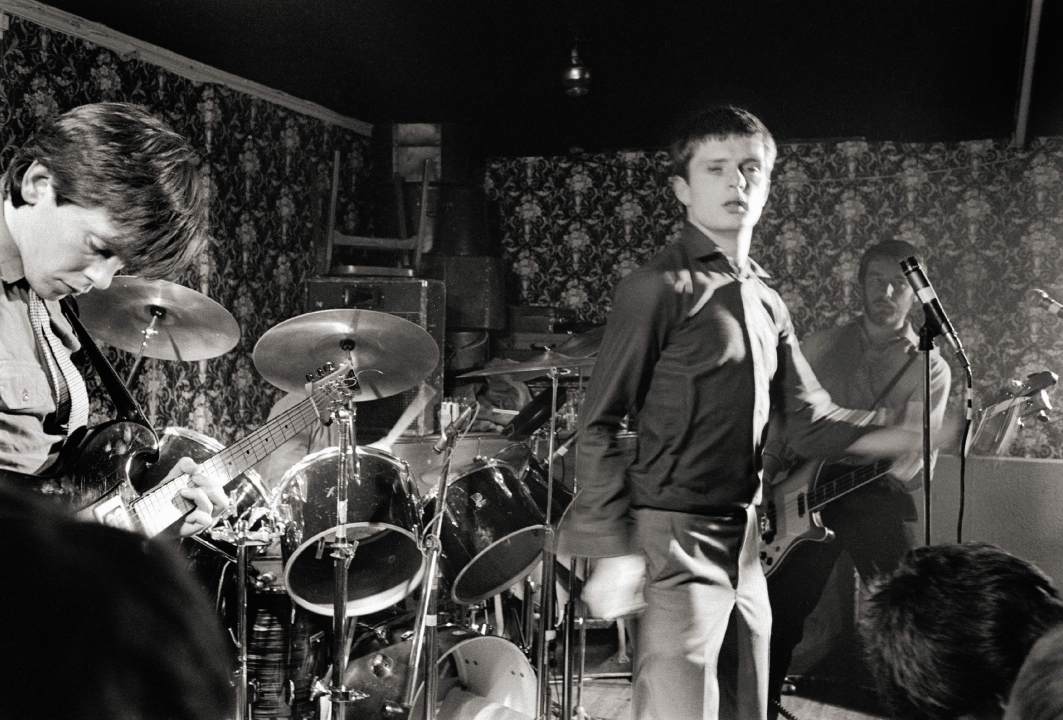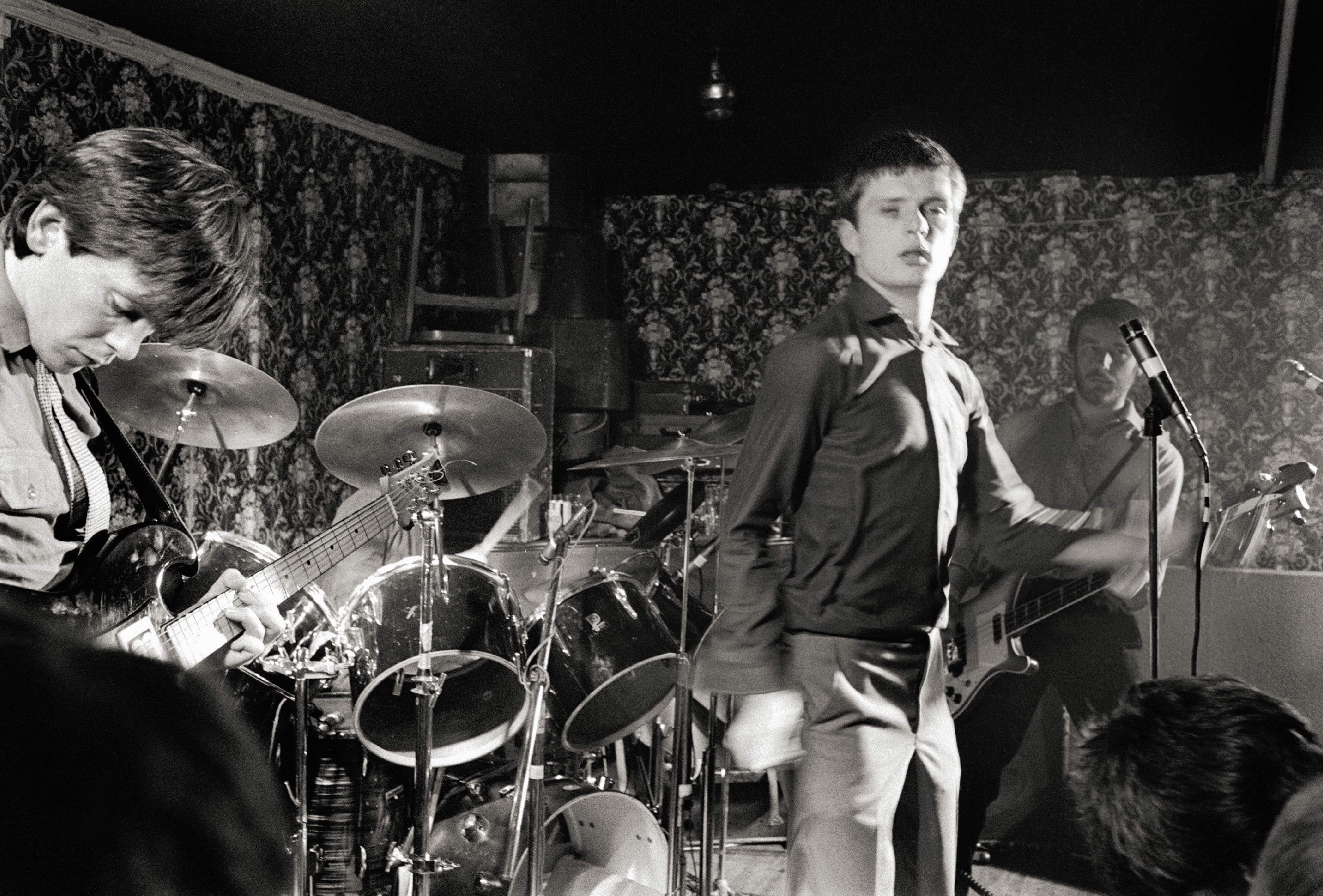Once upon a time there was the arche-typal Manchester band — half of which came from Macclesfield, in leafy Cheshire, and a quarter of which grew up in Salford, a city in its own right, full of fans of a famous football club equally confused about its true home. This combustible combo was Joy Division — or it was after they dropped Warsaw, because of its Nazi connotations, adopting instead a moniker given to the brothels in Nazi concentration camps. Not a mass of contradictions, then.
Bathed in such muddy waters, Joy Division remains a band in need of serious re-evaluation 40 years after the release of their debut LP, Unknown Pleasures. And Jon Savage seems the perfect choice to do posterity such a service, being one of three national music journalists who lived in Manchester in its post-punk heyday.
Back then, that trio would take turns to champion this band of miscreant public schoolboys and dyed-in-red-wool football hooligans when their music, at least, could barely get arrested. Mick Middles and Paul Morley — the other Mancunian punk pensmiths, whom readers of NME and Sounds devoured in their post-punk heyday — shot their own literary wads in 2006 and 2016 covering Division in posterity’s dusky afterglow and applying (some spurious) shades of meaning.
Now it’s the turn of the esteemed author of England’s Dreaming. But it is one Savage has consciously abrogated — which is a crying shame. I wanted to read Savage Does Division, not the rambling latter-day reminisces of the three survivors of the band, all of whom have already published their own memoirs (the last of which, from the drummer Stephen Morris, came out only a few weeks ago).
It is rare for a writer this good to stoop to co-opting such a slipshod sub-genre. Generally, oral histories — certainly in the punk domain — prove the truth of the maxim that those who can, write and those who can’t, compile others’ words and call it a history. In reality, it’s merely the raw data for history.
The late Brendan Mullen, the loquacious Legs McNeil and self-promoter par excellence John Robb have all published eminently readable oral histories of the punk scenes in LA, New York and England respectively. They have done so with resources a-plenty, there being substantial numbers of embittered blowhards looking to vent their frustrations at the world’s iniquities. Like I say, eminently readable.
If almost nothing recorded in Mullen’s or McNeil’s tomes is actually true, punk was always about perception taking a sledgehammer to inconvenient truths: most of these bands weren’t very good and almost none of them sold any records.
However, unlike most of their contemporaries, JD really were very, very good on stage, mustering a tidal wave of noise at the centre of which was the whirling dervish Ian Curtis, apoplectically — or, as it turned out, epileptically — lost in the music. Yet most people lucky enough to have heard Joy Division live — where they were masters of their own domain — would have seen them playing support to the likes of the Rezillos, Buzzcocks and PiL.
Meanwhile, as a self-immolating gesture to punk solidarity, JD did all they could to ensure they sold precious few records. Nothing released in the band’s lifetime even set the alternative charts alight, let alone charted in the real world. With Tony Wilson running their record label (on a small bequest from his mother) and a manager who really wanted to be a Northern Soul DJ, they never stood a chance.
The duo of dunderheads they entrusted to make the ‘right’ commercial decisions duly appointed as their producer Martin Hannett, who frankly should have been with the BBC Radiophonic Workshop. The result was a sound largely appropriated from the likes of Pere Ubu, a band first championed in print by one Jon Savage; a connection some Stretford smartass noted in the first JD monograph, Form & Substance, in 1987.
Herein, though, precedents and antecedents have they none. No one even mentions the pivotal role of the Ubu/Pop Group Rafters show in April 1978. But at least Peter Hook takes issue with Hannett’s idea of production: ‘There must be only me and Bernard… that don’t like Unknown Pleasures, because it doesn’t sound like we did live. It’s pretty one-dimensional.’
Such insights, though, have to be hewn out of this slightly indulgent exercise, by folk who’ve already gleaned that something lifelike resides below the surface sound effects and tragic idiot act that brought this story, and the band, to a premature close.
Savage — a writer I greatly admire — has preferred to turn the tape-recorder and/or camera on a small cabal of the usual suspects (most of the interviews being for a recently broadcast documentary). It means the same old, same old: mythology reinforced by men — and a couple of token women — who still can’t explain who shot this post-modern Liberty Valance.
This Searing Light, the Sun and Everything Else: Joy Division, the Oral History
Author: Jon Savage
Publisher: Faber
Page count: 336
Price: £20







Comments